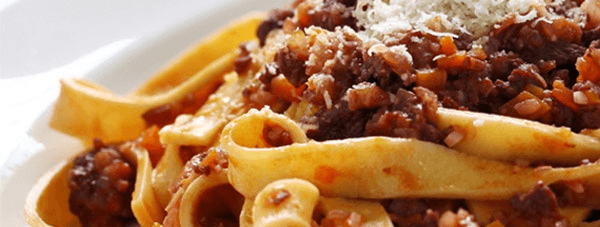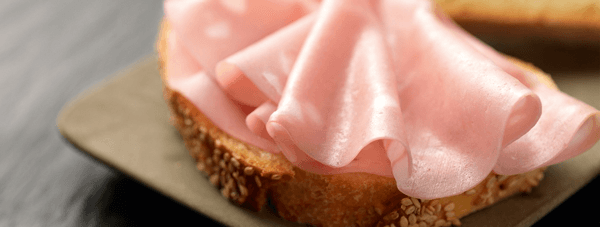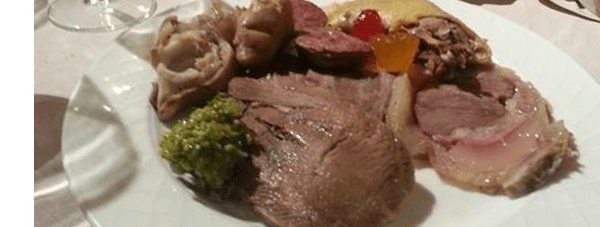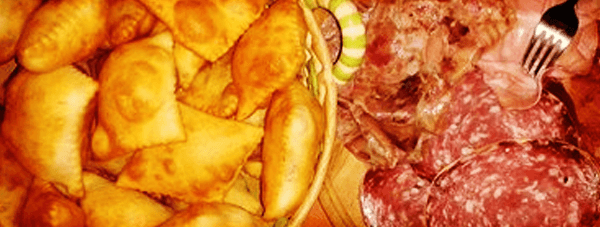Bologna is without a doubt Italy’s culinary capital – if you’re a foodie, it’s a must on any trip to Italy.

Perhaps the cities most famous dish, and the one that has been bastardised across the English-speaking world as Spag-Bol, much to the bewilderment and disgust of local cooks; you see, one of the things that defines the difference between an Italian and the rest of the world is the relationship she/he has with pasta. No right-minded Bolognese cook would ever put spaghetti in contact with a hearty meat dish, as it just doesn’t combine the same way that it does with a fresh egg-based pasta like Tagliatelle. Centuries of work has gone into this, to make sure that the sauce, rather than slipping merrily off into the stratosphere, sticks closely with the pasta. Sadly there are some tourist restaurants in Bologna now offering ‘spaghetti bolognese’ but that’s just another proof that market-based economics has nothing to do with morality!

Another linguistic/cultural barrier is the American insistence on calling spam Bologna. The processed pinkish meat that you get in Bologna may resemble spam, but it’s anything but. Again it’s a careful preparation that has evolved over the centuries (a recipe for Mortadella has been found as early as the 1300s). The name of the cold cut probably comes from the latin mortarium, a small mortar in which the meats would be pestled together (though there are a number of different theories).
The sausage is prepared by taking very carefully chosen cuts of pig meat and fat. These are placed inside a skin, mixed with some spices (some mortadella include pistacchio nuts), and are cooked slowly for anything from an couple of hours through to a full day.
Mortadella gets eaten usually in two different ways – either cut into thin velvety slices to be used in a panino, or often cut into chunky cubes to be eaten at aperitivo time. There are lots of variations, and you’ll often find mortadella included in other dishes – for example, it is often used in the filling for traditional tortellini.
Perhaps because of the spam rap, Mortadella has become increasingly trendy over the last couple of years, with many locals championing the local dish. It boasts an IGP mark – linking it to Bologna, and there are even clubs set up to champion it, and festivals dedicated to it.

Tortellini or turtléin in Bolognese dialect are the pride and joy of the city. Legend has it that their shape comes from an over-eager hostelry owner (in Castelfranco , who rudely peeking through a keyhole, at an undressing client, was taken by the beauty of her belly button, and immediately rushed to recreate it in pasta. The food is part of that rich tradition of Italian cooking – i cibi poveri, or poor foods. The pasta was filled with a combination of meat leftovers (taken from the noble’s scraps) and cheese. It’s a perfect combination, and when prepared properly is a delight.
The Bolognese are fiercely proud of their Tortellini – you can buy them fresh in pasta shops throughout the city, but beware; in a true story, I went to buy some tortellini with a friend, who admitted to the pasta maker that he planned to bring them back to Ireland with him. Horrified, she said that they would be ruined by the trip, and so refused to sell them to him.
The traditional way to eat them, in Bologna, is in a bowl of broth (usually made from hen or cockrel), but most restaurants will have various combinations.

More than one visitor to Bologna has been surprised to see the predominance of boiled meats on menus – not something you might normally associate with Italian cooking. Remember, though, that Bologna during the winter months is cold and wet, and there’s a tradition of using everything in the kitchen – so broths could be prepared for the primi piatti, like tortellini in brodo, and then the boiled meats used for preparing the broth would be served up as secondi. It’s not to everyone’s taste, but if you like things like boiled tongue, then this is definitely the place to get it. The meats are mixed usually, boiled with vegetables, and then served up with a salsa verde

Crescentine are deep fried pockets of dough, that are served up fresh to be filled with various cold cuts – prosciutto crudo, mortadella, salumi misti (generically known as affetati). Probably a cardiologist’s worst nightmare, but extremely tasty, they get served up at lots of popular local festivals during the summer. They tend to be more associated with the province of Bologna rather than the city centre, but there are various restaurants that serve them up (often as antipasti or as a full meal). They often come with tigelle, although these small circular flat-breads are traditionally from Modena (so don’t make the mistake of calling them Bolognese traditional food!).
Along with the cold cuts you usually get a soft cream cheese like squaquerone and pickled vegetables. Take note that in this context, if you’re offered ‘pesto’ it’s very often a lard/herb mix, rather than the basil/pine kernel combination you’d imagine.